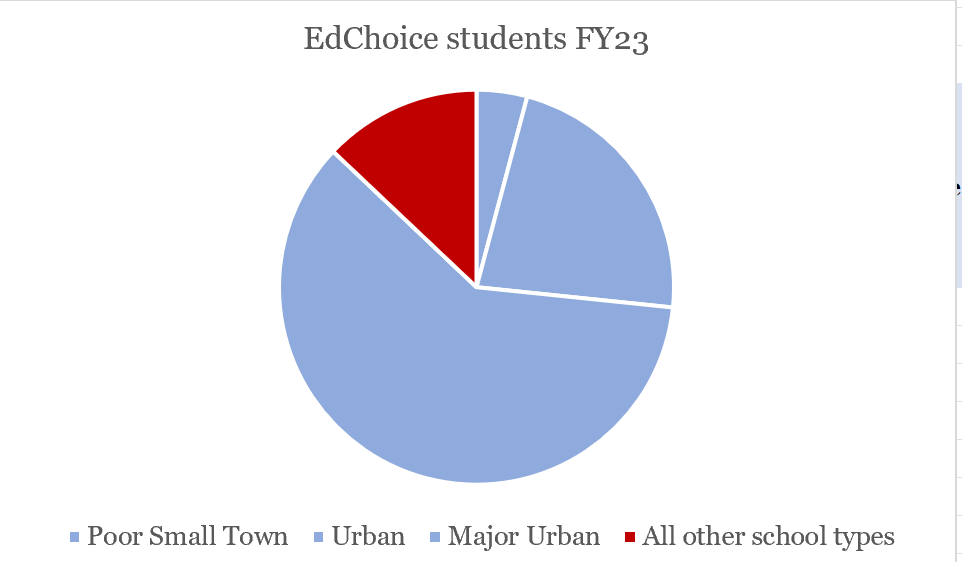10th Period: Vouchers Keeping Public School Kids Starved of Funding
Amazingly, in districts where 87% of EdChoice voucher kids reside, 100% of the state's continued public school funding shortfall has occurred.
You don’t see these correlations much. But when you do, it requires attention.
In the state budget, the legislature continued its march toward fully funding Ohio’s new Fair School Funding Plan. However, there are three types of districts where, overall, the state continues to fall short of the plan’s promise: poor small town districts and urban districts.
Those three district types (as determined by the Ohio Department of Education) account for a $111 million shortfall from what the state promised two years ago a fully funded Fair School Funding Plan would provide those students.
Those districts account for 87 percent of all EdChoice voucher students in the state.
To say EdChoice doesn’t have an effect on public school students’ state funding is an outright lie. These new numbers tell the story. And it is why Ohio’s school funding system remains unconstitutional until at least 2 years from now, but probably longer.
Why?
Because the money for the EdChoice voucher comes out of the exact same funding line public school foundation funding comes from. If you are not fully funding students in public schools, but you’re giving private school parents making $140,000 a year $8,407 yearly vouchers so their kids can have their private school tuitions subsidized by Ohio taxpayers, then the voucher program is by definition hurting public school kids.
By the way, there are more than 520,000 Ohio public school students who attend these types of schools that are overall getting shortchanged. Not to mention they are far less white and wealthy than other Ohio school districts.
This issue is one of the many reasons why the school voucher lawsuit has such a strong chance of success. And it is why despite the legislature’s welcomed, new found commitment to the Fair School Funding Plan, any excitement over that must be tempered by the state’s continued obsession with using taxpayer money to subsidize private school education for wealthy people.
One final insult. Those private school tuition subsidies add up to more than $200 million — about double the amount of funding shortfall found in those three district types.
This blog post has been shared by permission from the author.
Readers wishing to comment on the content are encouraged to do so via the link to the original post.
Find the original post here:
The views expressed by the blogger are not necessarily those of NEPC.

